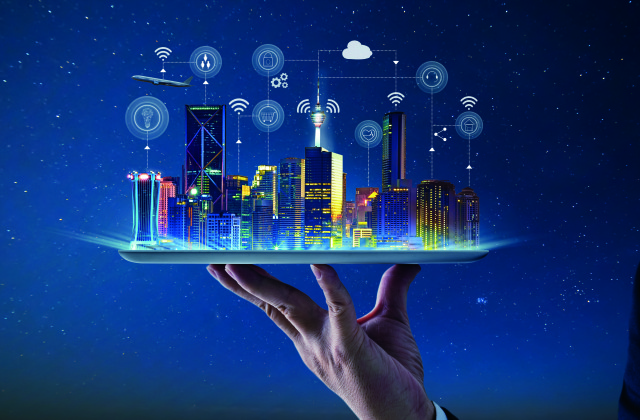Future-proofing your building

When dealing with changes caused by the Pandemic, building managers need to look forwards as well as at immediate adaptations. Nick Sacke of Comms 365 looks to the future.
The Covid-19 crisis has initiated a dramatic change almost overnight with businesses forced into adopting remote working without warning. With government lockdown measures starting to lift, urging those who can't work from home to return to their working environments, many organisations will be tackling new challenges of how to make their workspace ‘Covid-secure’ in a socially distancing world.
In order to make this shift successfully, businesses will need to make the necessary changes to support this transformation and maintain continuity. But while many are starting to return to the workplace, there are still a number of risks. Basic processes such as limiting the number of people in the office and regular hand washing and cleaning, can all play a part. Moreover, technology can play an even bigger role in allowing buildings to become smarter in order to be workable in the current environment.
Thanks to the availability of lower-cost IoT devices that can harvest data at scale; integration of local area and wide area wireless communication networks to relay sensor data, enhanced data processing via cloud-based data analytics, the design of commercial, industrial, buildings and their operations blueprint has now changed. IoT technology, including temperature monitoring solutions using thermal cameras, can be an ideal solution to alert employers and employees to potential viral symptoms before coming into contact with others. Companies of all sizes are starting to use temperature monitoring terminals in an attempt to detect symptoms as early as possible.
Office practices will also be affected due to frequent touchpoints throughout buildings. Automation applied to door handles, elevators and sanitary systems is already underway. Use of voice-activated system technology will become a key element of design to avoid touching surfaces. Hand sanitizer bottle fill levels and 2-meter distance between people will be monitored, as well as movement around the office and density in recreational areas.
AI systems that can use CCTV networks to count in real-time how many people are gathered together are now in deployment. Social distancing will become increasingly more challenging as the number of people returning to work rises, so, therefore, technology that can help to monitor the flow of people, alerting when gatherings of too many people are occurring in one place, enabling measures to be taken earlier to disperse groups. Similarly, contact tracing applications that inform us about potential exposure to infected persons will become part of our daily routine.
However, data privacy is a concern with these approaches and remains one of the most significant barriers to adoption within the smart building market is cultural. The UK is one of the most CCTV intensive nations in the world and in recent challenging times, we have become used to the fact that our movements are constantly being observed. Many do not understand how smart technology can have a positive impact on monitoring and tracking symptoms and temperature, reducing the need for human touch, and many more subsequent benefits. Without this insight, the automatic response to new technology can be scepticism. Education is, therefore, key to overcoming these cultural concerns and by encouraging collaboration between all parties.
Finally, the huge spike in remote collaboration technology has proved itself capable of supporting operational processes. And as some return to work, technology will continue to support businesses, enabling companies to scale and employ flexible workforces.
In the near future, we expect smart building flexibility to expand, with an increase of customisable buildings that will provide personalisation of the environment for the individual user, such as individual temperature zones by desk. There are many new developments that may stir the market of Intelligent Buildings, including wafer-thin sensors that can be placed unobtrusively in challenging areas, small drone surveillance of perimeter security, and many more.
The changes that we have seen in business so far means that a ‘new normal’ is inevitable for everyone. Organisations need to prepare now to not only adapt to the new way of working, but also future proof their businesses for life post-Covid-19.
Nick Sacke is Head of IoT and Products at Comms365







